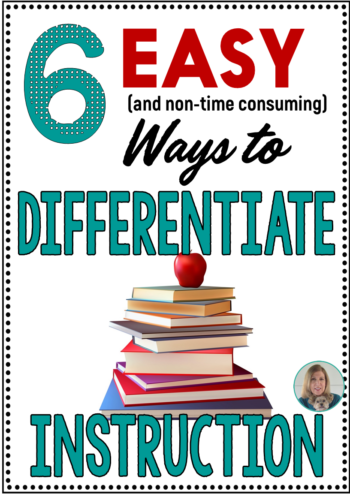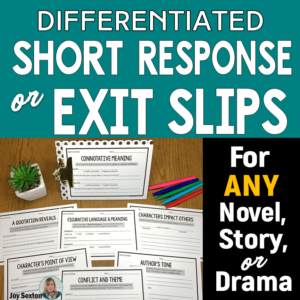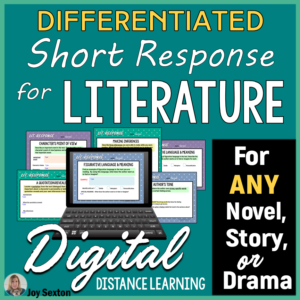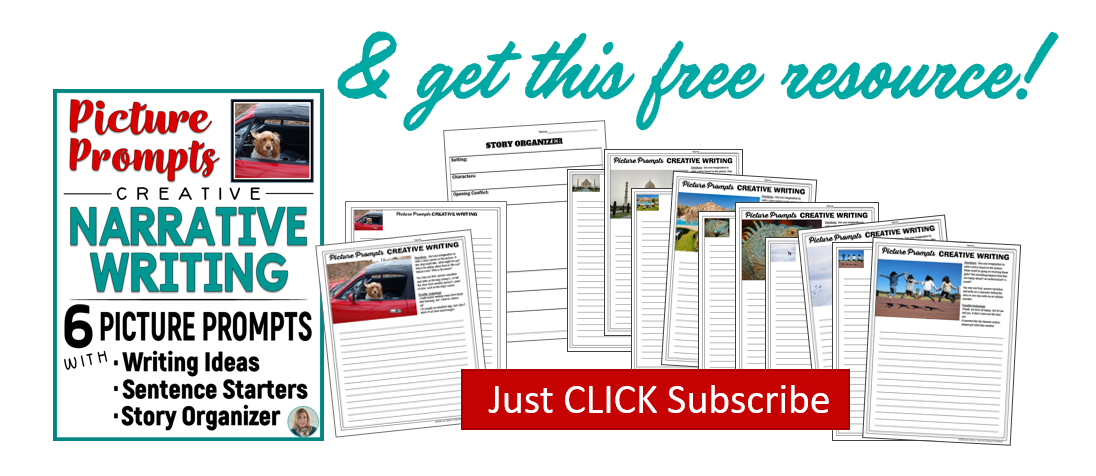Let’s face it, our students come to us with an incredible array of both talents and needs. When faced with the task of differentiating instruction, it’s easy to feel overwhelmed. I admit, I was one of those who said, “Yeah, right, with the little planning time I have, how can I possibly create different plans for all my levels of learners?” Plus, sometimes I just think, This is 7th grade, and I should be teaching to my grade level. But looking out at our students, and also considering the demands of administrators, we all know that differentiation is a necessity.
Well, the good news is . . . I discovered it doesn’t have to be time-consuming! I had been doing these things all along! I’m going to share some quick and easy ways I differentiate instruction with my 7th and 8th grade students.
Now we’ve all seen articles and info-graphics on what differentiation is and isn’t. To me, differentiating is simply meeting the needs of the individual student. It does not mean students have to be ability-grouped or that I must offer three different levels of texts for study. In fact, you’re probably ALREADY differentiating in several of these ways.
Here are my 6 EASY ways to differentiate instruction:
1. Partner Work – When students are given opportunities to work with a partner, that’s differentiating. Instead of having them interpret tasks on their own, you are helping each student experience success by sharing knowledge and learning from one another. Example: When students are given close reading questions, working with a partner helps them to unlock the text together, especially when the questions increase in complexity. I know they will not be afforded the luxury of a partner to discuss complex questions with when they take the state assessment. However, I am using the partner support as a differentiation tool as they practice their strategies.
2. Choice Independent Reading – In reading workshop, students choose their own novels for independent reading, and with this practice a teacher is differentiating. Each student is allowed to read a book at his/her own reading level. I love keeping the reading workshop going all year long—it’s an ongoing means of differentiation. Choice reading also comes in very handy as a task for early finishers! One year, my administrator complimented me on the wonderful differentiation he saw as the higher level learners finished their task earlier than others and picked up their choice novels and read. Score.
3. Topic Choices – You name it, whether it’s writing prompts or research topics, I try to offer choices. I have the best success with the end product that way, so there’s another way that I’m meeting the individual needs of students! With writing topics, I like to have an A, B, or C. If I require a theme essay, I provide a list of theme topics students can choose from. With research projects, students invest so much more of themselves when they get to choose the topic based on their background knowledge, strengths, or interests.
4. Product Choices – With a little brainstorming, it’s easy to come up with some variety in products for an assignment. Most likely, you are doing this already! For example, a student might have the choice of creating a poster, flip book, comic strip, or two-page written paper to demonstrate learning of the same concept. Using technology, there are lots of engaging options as well. What’s key is that the expectations and assessment piece are similar for all product choices. Try a RAFT writing assignment as a great differentiation tool. You just devise four different Role, Audience, Format, and Topic choices based on a text and students choose the ways they want to respond. To differentiate my independent reading assignment, students choose from three different styles of Book Response to demonstrate understanding of their novel.
5. Writing About Themselves – Offering learning activities that allow students to draw from their own lives is a simple means of differentiating. I use free verse poetry at the beginning of the year where students write about themselves. Then we move to narrative writing where they tell stories from their lives. Any project where students can draw on their own interests and strengths instantly energizes the learning climate and showcases individual student potential. We do a Persuasive Project where each student creates his/her own business! It’s amazing the effort students show. When they enthusiastically present their business ideas, I know that they have benefited greatly from the embedded differentiation.
6. Scaffold Instruction – When designing a lesson, plan lots of scaffolds so that all levels of learners can be reached. Example: Start with an interesting quotation or anecdote. Then show a short video clip. Next, model something or read something authentic. Use graphic organizers and let students work with a partner on practice, and then graduate to an independent piece such as an exit slip to demonstrate understanding. With writing lessons, using paragraph-by-paragraph graphic organizers, word lists, anchor papers, and mentor texts offers specific support to ensure that students at every level are on board. By taking the time to build in a lot of steps, you are maximizing your chances for individual student success AKA differentiating instruction.
These are the EASY ways to differentiate, and sometimes we overlook them! So if you’re asked how you’re differentiating, maybe you can add some of these ideas to your list.
Thanks for reading!
You might like these Differentiated Short Response /Exit Slips or the Google Slides Version. They’re a quick and easy differentiation tool I keep on hand to use with any literature.







thanks
Far from the three-worksheet option that I mentioned, I try to make my tasks more open-ended. If I’m differentiating work in three ways, I’ll give all the options to all the groups and suggest a starting point for each group. A student who finds an assignment too easy or finishes early can move onto the trickier tasks, and the reverse goes for children who are struggling. The Target Your Maths series is an easy way to achieve this if you’re in a hurry.